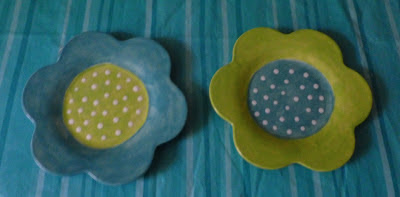First we started with a wooden base on which 24 spokes of wide reed were attached. This would be the frame for the basket. Then we took a thin round reed and did a weave around the base for about three or four rows.
Next, we took a small flat reed and built up the sides of the basket using a start and stop method of weaving. This requires cutting and tucking each row rather than doing a continuous weave.
After more than three hours of intensive labor on our baskets, we called it a night.
We left our baskets to finish another night.
Here are the finished products after another three hours of intensive work. We were very proud and thankful for the help of Junetta and Joann.






























